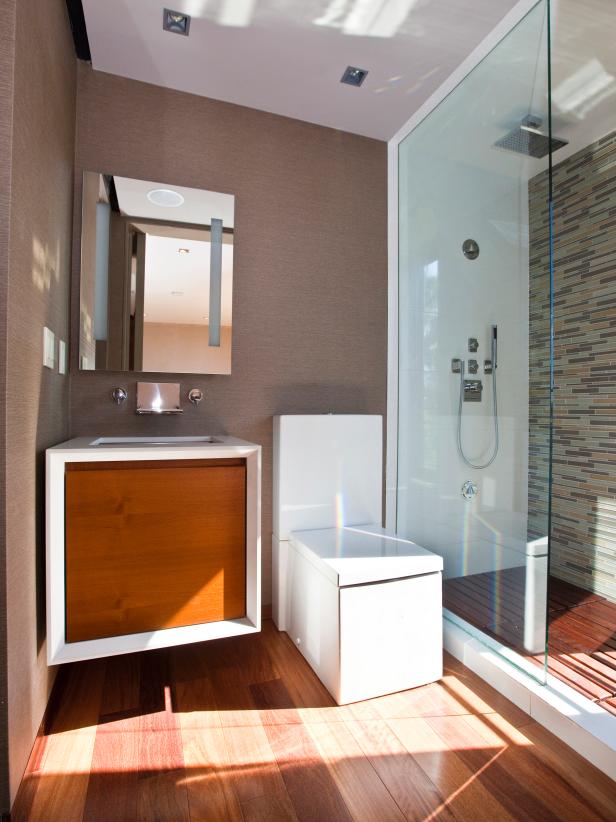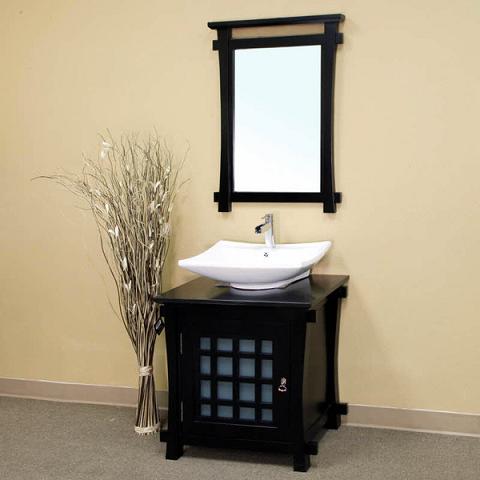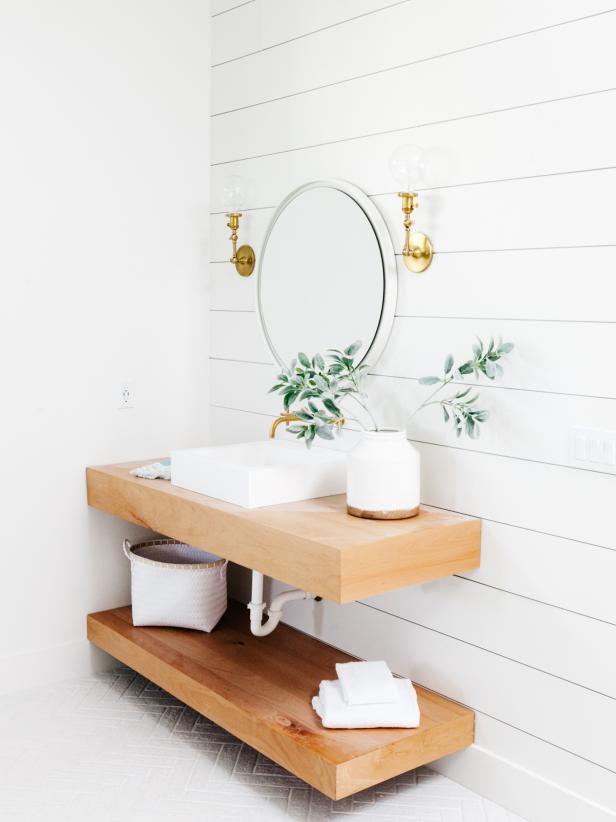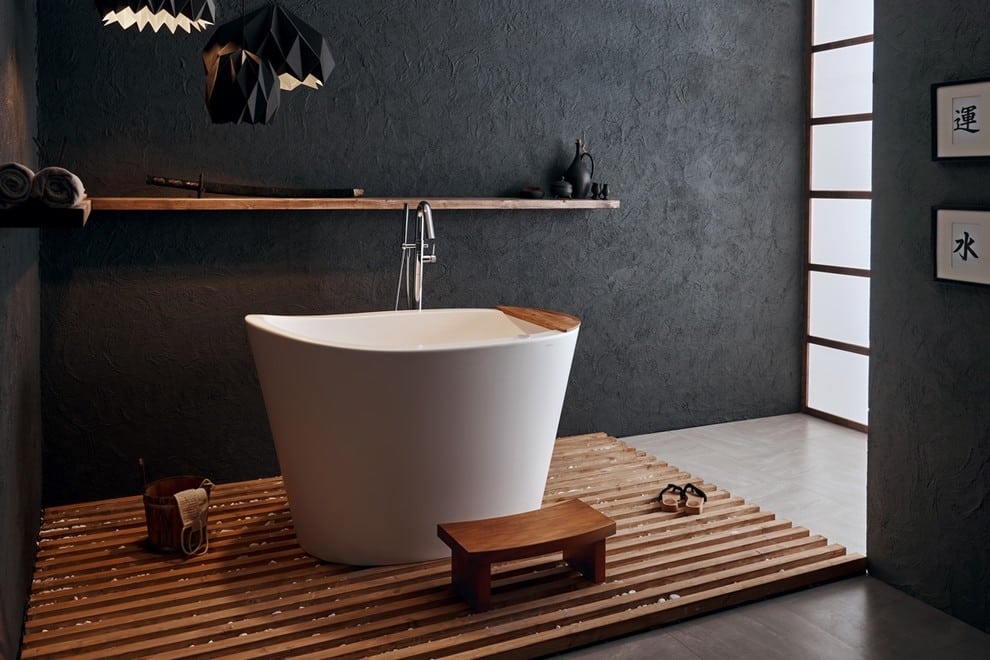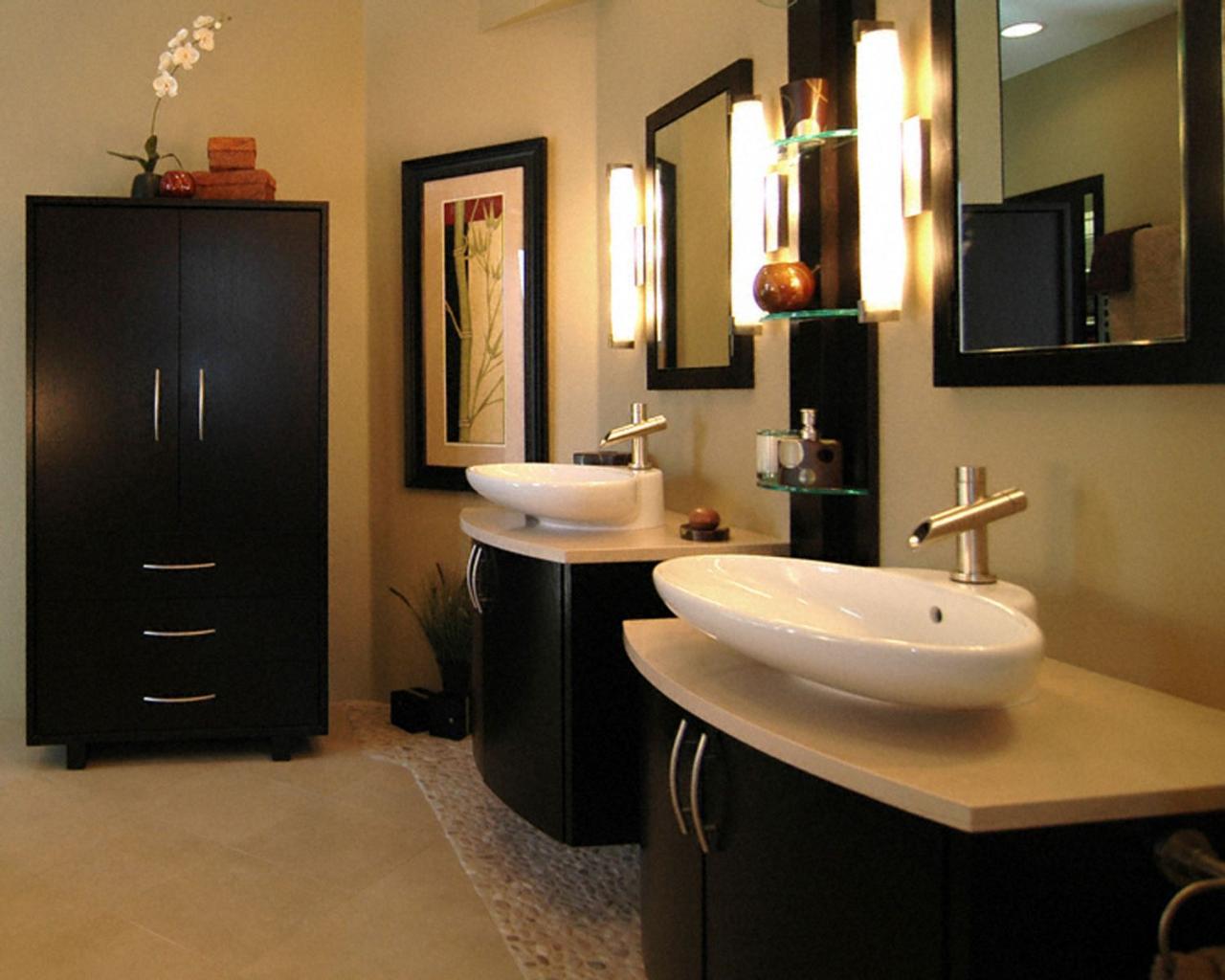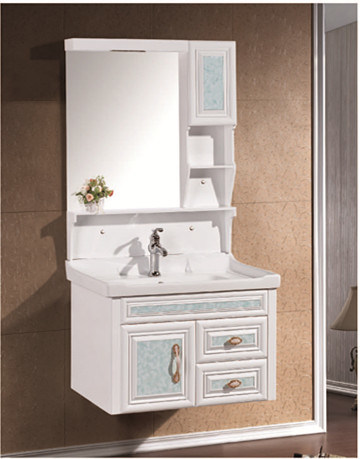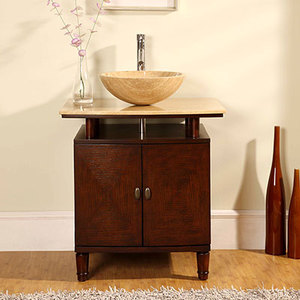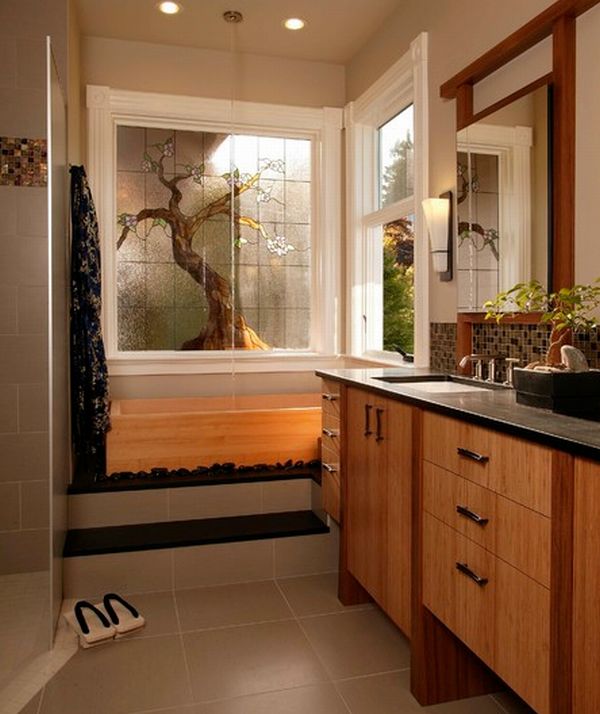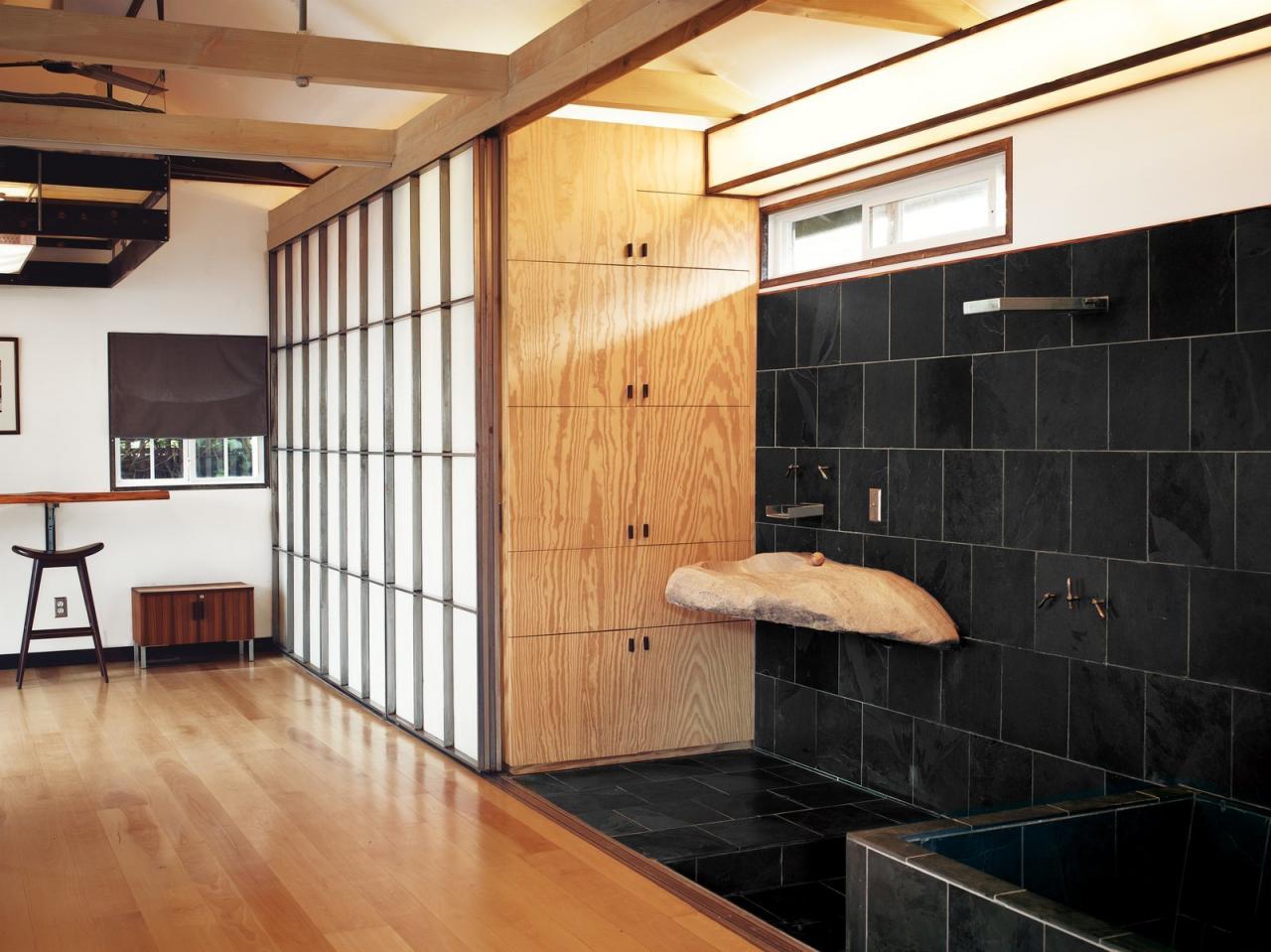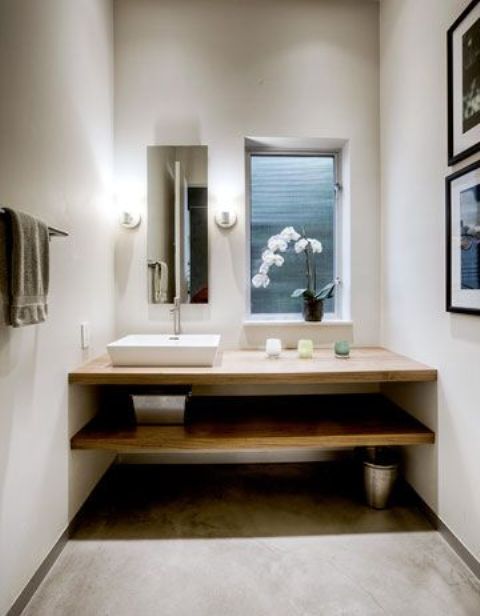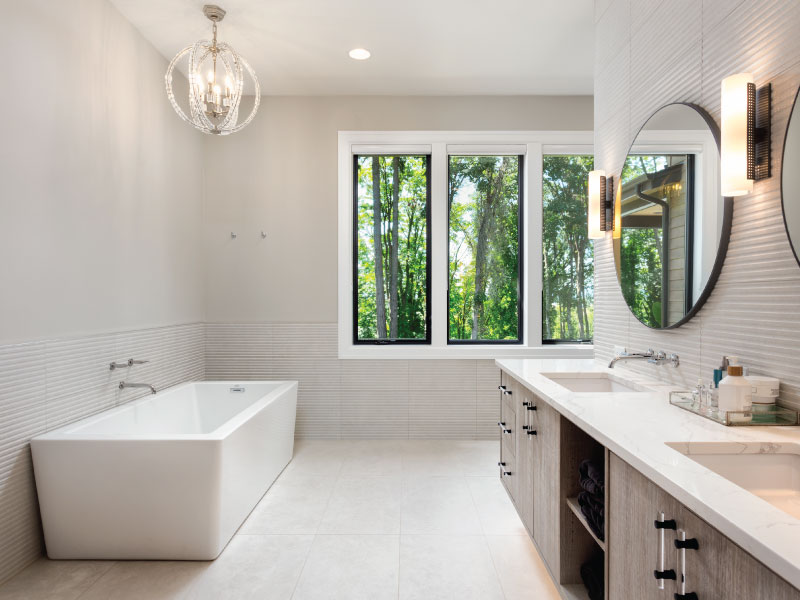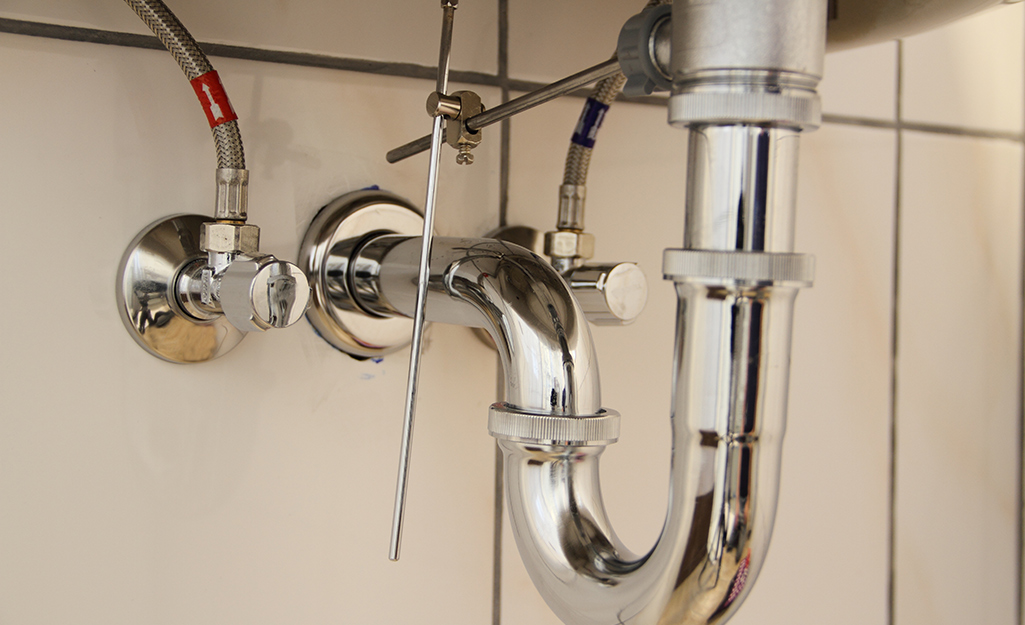The Essence of Japanese Style Bathroom Sinks
Japanese style bathroom sinks embody simplicity, functionality, and harmony with nature. Rooted in the principles of Japanese design aesthetics, these sinks offer a serene and minimalist approach to bathroom decor. They are characterized by clean lines, natural materials, and thoughtful craftsmanship, reflecting the traditional Japanese concept of beauty in simplicity. Here’s why Japanese style bathroom sinks are more than just fixtures—they’re a reflection of a cultural ethos:
- Minimalist Design: Japanese style bathroom sinks are known for their minimalist design, which emphasizes simplicity and restraint. These sinks typically feature clean lines, smooth surfaces, and understated details, creating a sense of calm and tranquility in the bathroom. The minimalist design of Japanese style sinks is inspired by the Japanese aesthetic principle of “ma,” which refers to the beauty of space and the importance of simplicity in design.
- Functional Elegance: While Japanese style bathroom sinks are minimalist in design, they are also highly functional and efficient. The streamlined design allows for easy cleaning and maintenance, while thoughtful features such as integrated storage or adjustable water flow enhance usability. Japanese style sinks are designed to seamlessly blend form and function, creating a harmonious and enjoyable user experience in the bathroom.
- Connection to Nature: Japanese design is deeply influenced by the natural world, and this connection to nature is evident in Japanese style bathroom sinks. These sinks often incorporate natural materials such as wood, stone, or bamboo, which evoke a sense of tranquility and warmth. The use of natural materials not only adds visual interest to the bathroom but also creates a connection to the natural environment, fostering a sense of relaxation and well-being.
- Cultural Significance: In Japanese culture, the bathroom is considered a place of cleansing and relaxation, where individuals can unwind and rejuvenate both body and mind. Japanese style bathroom sinks reflect this cultural significance, embodying the principles of mindfulness, simplicity, and harmony with nature. By incorporating Japanese design elements into the bathroom, homeowners can create a space that promotes a sense of peace and serenity, enhancing the overall quality of life.
- Versatility and Adaptability: While Japanese style bathroom sinks are rooted in traditional design principles, they are also versatile and adaptable to a range of interior styles. Whether you prefer a modern, minimalist look or a more traditional aesthetic, Japanese style sinks can complement a variety of decor themes. Their timeless design and understated elegance make them a popular choice for homeowners seeking to create a tranquil and inviting bathroom environment.
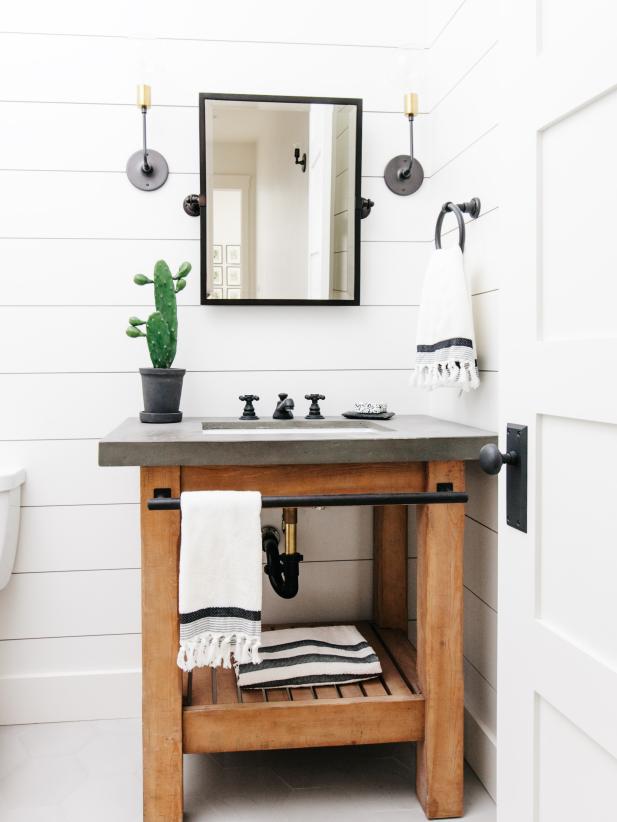
Design Features of Japanese Style Bathroom Sinks
Japanese style bathroom sinks are distinguished by their unique design features, which combine functionality with elegance and simplicity. These sinks are carefully crafted to embody the principles of Japanese design aesthetics, creating a serene and harmonious atmosphere in the bathroom. From clean lines to natural materials, Japanese style sinks offer a range of design features that set them apart. Here are some key design features of Japanese style bathroom sinks:
Clean Lines: Japanese style bathroom sinks are characterized by clean, straight lines that create a sense of order and balance in the space. The simplicity of the design allows for easy integration into a variety of bathroom styles, from modern to traditional. Whether wall-mounted, countertop, or freestanding, Japanese style sinks feature sleek and minimalist profiles that contribute to a sense of calm and tranquility in the bathroom.
Natural Materials: Natural materials such as wood, stone, and bamboo are commonly used in Japanese style bathroom sinks, adding warmth and texture to the space. These materials are chosen for their durability, sustainability, and aesthetic appeal, reflecting the Japanese appreciation for the beauty of the natural world. Wood, in particular, is often used for sink countertops and cabinets, lending a warm and organic feel to the bathroom environment.
Integrated Storage: Many Japanese style bathroom sinks feature integrated storage solutions, such as drawers, shelves, or cabinets, to maximize functionality and efficiency. These storage features are seamlessly incorporated into the design of the sink, providing convenient space for storing toiletries, towels, and other bathroom essentials. Integrated storage helps to keep the bathroom organized and clutter-free, promoting a sense of calm and relaxation in the space.
Simple Hardware: Japanese style bathroom sinks often feature simple and understated hardware, such as sleek faucets, handles, and knobs, that complement the minimalist design of the sink. The hardware is carefully selected to blend seamlessly with the overall aesthetic of the bathroom, enhancing the sense of harmony and balance in the space. Brushed or matte finishes are commonly used to create a soft and subtle look that complements the natural materials of the sink.
Compact Footprint: Japanese style bathroom sinks are designed with space efficiency in mind, making them ideal for smaller bathrooms or minimalist design schemes. These sinks typically have a compact footprint and streamlined silhouette, allowing them to fit seamlessly into tight or awkwardly shaped spaces. Despite their compact size, Japanese style sinks are still highly functional, providing ample space for washing and grooming while maximizing floor space in the bathroom.
Customizable Options: While Japanese style bathroom sinks often adhere to certain design principles, there are also customizable options available to suit individual preferences and needs. Homeowners can choose from a variety of materials, finishes, and configurations to create a sink that meets their specific requirements and complements their unique style. Whether you prefer a traditional wooden sink or a sleek stone countertop, there are endless possibilities for customizing a Japanese style sink to suit your taste and lifestyle.
Material Choices for Japanese Style Bathroom Sinks
The choice of materials plays a crucial role in defining the look, feel, and durability of Japanese style bathroom sinks. From natural woods to sleek ceramics, Japanese style sinks are available in a variety of materials, each with its own unique characteristics and aesthetic appeal. The selection of materials is influenced by factors such as design preferences, budget, and maintenance requirements. Here are some popular material choices for Japanese style bathroom sinks:
Wood: Wood is a quintessential material in Japanese design, valued for its warmth, natural beauty, and versatility. Japanese style bathroom sinks often feature wooden countertops, cabinets, or vessel sinks, adding a touch of organic charm to the space. Common wood choices include hinoki, cedar, and bamboo, which are known for their durability, moisture resistance, and aromatic properties. Wood sinks can be left untreated to develop a rich patina over time or sealed to maintain their original appearance.
Stone: Stone is another popular material choice for Japanese style bathroom sinks, prized for its durability, elegance, and timeless appeal. Granite, marble, and limestone are commonly used in sink countertops, offering a luxurious and sophisticated look that complements a variety of decor styles. Stone sinks are available in a range of colors and finishes, from polished to matte, allowing for customization to suit individual preferences. While stone sinks require regular sealing to prevent staining and water damage, they are highly durable and can withstand years of use.
Ceramics: Ceramics are widely used in Japanese style bathroom sinks for their durability, ease of maintenance, and versatility. Porcelain and ceramic sinks are available in a variety of shapes, sizes, and finishes, making them suitable for a range of design preferences. Japanese style ceramic sinks often feature simple, understated designs with clean lines and smooth surfaces, reflecting the minimalist aesthetic of Japanese design. Ceramic sinks are resistant to stains, scratches, and heat, making them ideal for high-traffic bathrooms.
Metal: Metal sinks, such as stainless steel or copper, are less common in Japanese style bathrooms but can still be incorporated for a modern and industrial look. Stainless steel sinks are durable, hygienic, and easy to clean, making them a practical choice for busy households. Copper sinks, on the other hand, develop a unique patina over time, adding character and warmth to the bathroom. Metal sinks can be paired with wooden or stone countertops for a stylish and contemporary aesthetic.
Composite Materials: Composite materials, such as solid surface or engineered stone, offer a durable and affordable alternative to natural materials for Japanese style bathroom sinks. These materials are made from a blend of resins, minerals, and pigments, resulting in a non-porous, stain-resistant surface that is easy to clean and maintain. Composite sinks are available in a range of colors, patterns, and textures, allowing for greater design flexibility and customization.
Incorporating Japanese Style Bathroom Sinks into Your Home
Incorporating Japanese style bathroom sinks into your home can create a tranquil and harmonious atmosphere that promotes relaxation and well-being. Whether you’re renovating an existing bathroom or designing a new one, Japanese style sinks offer a range of design options to suit your preferences and lifestyle. From minimalist wooden sinks to sleek ceramic vessels, there are endless possibilities for incorporating Japanese design elements into your bathroom. Here are some tips for incorporating Japanese style bathroom sinks into your home:
Choose Natural Materials: Opt for bathroom sinks made from natural materials such as wood, stone, or bamboo to create a sense of warmth and connection to nature. Wooden sinks, in particular, add a touch of organic charm to the space and complement a variety of decor styles. Consider pairing a wooden sink with a stone countertop or ceramic vessel for a harmonious and balanced look.
Keep It Simple: Embrace the principles of Japanese design by keeping the bathroom decor simple and understated. Choose clean lines, minimalistic fixtures, and neutral color palettes to create a serene and uncluttered environment. Avoid excessive ornamentation or decorative elements that can disrupt the sense of harmony and balance in the space.
Focus on Functionality: Japanese style bathroom sinks are designed to be both beautiful and functional, with thoughtful features that enhance usability and efficiency. Choose sinks with integrated storage solutions, adjustable water flow, and easy-to-clean surfaces to maximize functionality and convenience in the bathroom. Consider the specific needs of your household when selecting sink features to ensure that they meet your requirements.
Create a Zen-Inspired Space: Incorporate elements of Zen philosophy into your bathroom design to create a peaceful and tranquil atmosphere. Add natural elements such as plants, rocks, or bamboo accessories to bring the outdoors inside and create a connection to nature. Install soft, diffused lighting and use calming colors such as soft greens, blues, and earth tones to promote relaxation and well-being.
Consider the Layout: Pay attention to the layout and flow of the bathroom when incorporating Japanese style sinks into your home. Position the sink in a central location with easy access to other bathroom fixtures such as the shower, bathtub, and toilet. Allow for ample space around the sink for movement and accessibility, and ensure that there is sufficient storage nearby for towels, toiletries, and other essentials.
Personalize with Accessories: Add personal touches to the bathroom with accessories that reflect your style and personality. Choose minimalist accessories such as bamboo bath mats, ceramic soap dishes, or woven baskets for a cohesive and harmonious look. Display artwork or decorative objects inspired by Japanese culture to enhance the overall ambiance of the space.
Maintenance and Care Tips
Maintaining the beauty and functionality of Japanese style bathroom sinks requires regular care and attention to ensure that they remain in top condition for years to come. From cleaning and sealing to preventing water damage, proper maintenance is essential for preserving the natural beauty and integrity of these sinks. Here are some maintenance and care tips for Japanese style bathroom sinks:
Clean Regularly: Regular cleaning is essential for keeping Japanese style bathroom sinks looking their best. Use a mild detergent or soap and warm water to clean the sink surface regularly, wiping away any dirt, grime, or soap residue. Avoid abrasive cleaners or harsh chemicals that can damage the finish or scratch the surface of the sink. For stubborn stains or mineral deposits, use a gentle abrasive cleaner or a solution of vinegar and water to dissolve the buildup.
Avoid Standing Water: Standing water can cause damage to wooden sinks or countertops, so it’s essential to wipe up any spills or splashes immediately. Use a soft, absorbent cloth or towel to dry the sink surface thoroughly after each use, paying particular attention to areas around the faucet and drain. Avoid leaving wet items such as towels or sponges on the sink surface, as prolonged exposure to moisture can lead to warping, discoloration, or mold growth.
Seal Natural Materials: If your Japanese style bathroom sink is made from natural materials such as wood or stone, it’s essential to seal the surface regularly to protect it from water damage and staining. Apply a high-quality sealant or finish specifically designed for the type of material used in your sink, following the manufacturer’s instructions carefully. Reapply the sealant as needed to maintain protection and ensure long-lasting durability.
Prevent Scratches and Damage: Take care to prevent scratches, dents, or other damage to the sink surface by using gentle cleaning tools and avoiding abrasive materials. Use soft sponges or microfiber cloths for cleaning, and avoid scrubbing with steel wool or abrasive brushes that can scratch the surface. Place a protective mat or tray in the sink basin to prevent damage from heavy or sharp objects, such as pots, pans, or utensils.
Monitor for Water Damage: Regularly inspect the sink area for signs of water damage, such as discoloration, warping, or mold growth. Check for leaks around the faucet, drain, or plumbing connections and repair any issues promptly to prevent further damage. Keep the area around the sink dry and well-ventilated to discourage mold and mildew growth and ensure a healthy indoor environment.
Follow Manufacturer’s Instructions: Finally, always follow the manufacturer’s instructions and recommendations for care and maintenance of your Japanese style bathroom sink. Different materials may require specific cleaning products or techniques, so it’s essential to consult the manufacturer’s guidelines for proper care instructions. By following these recommendations and practicing regular maintenance, you can keep your sink looking beautiful and functional for years to come.
Asian Inspired Bathroom Vanities For A Zen Like Modern Bathroom
Pin on Bathroom
China 2019 PVC Japanese Style Bathroom Vanity Cabinet – China
Asian Vanities For A Relaxing Asian Style Bathroom
Stylish And Tranquil Japanese Bathroom Designs
Modern Bathroom Vanity Ideas – Dwell
Peaceful Japanese-Inspired Bathroom Décor Ideas
Related Posts:
